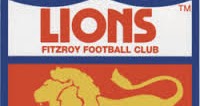- Moderator
- #1
A new book that may reveal further light on the AFL machinations in 1996, in trying to effect mergers between traditional Melbourne based clubs is finally out after a delay.

The Blurb:
On 1 September, 1996, Fitzroy Football Club travelled to the hostile environs of Subiaco and lost by 86 points to the upstart Fremantle Dockers. Such sapping defeats were nothing new to Roy Boys by then—Richmond had thumped the Lions by 151 points just a week earlier—but this one gave way to the most heartbreaking scene in the foundation AFL club’s history. With support from only a small, hardy crew of loyalists who’d trekked across the Nullarbor, Fitzroy FC was pronounced dead at the scene.
The League bosses who presided over the affair, not yet fully insulated by the billions of dollars in TV revenue that would flood the game with riches across the next two decades, sold it as a story of partial survival: Fitzroy would merge with the ugly duckling Bears to become the Brisbane Lions. This was a merger in name only; the reality was it was a takeover. But to dedicated band of players, coaches and fans who’d stuck with their beloved club through thick and thin, the death of Fitzroy was a devastating blow. A working-class club which had won eight Premierships—seven of them as a dominant force of the VFL’s first three decades—was not only being killed off, but stripped of its dignity.
In The Death of Fitzroy FC, acclaimed football historian Russell Holmesby tells the story of Fitzroy’s demise in the words of the men and women who were there as it all fell apart. In an oral history spanning from the club’s last almost-glory years of the 1970s and 80s, through the painful death throes of the mid-90s, and taking stock of the Brisbane deal with the benefit of hindsight, club heroes explain the love and passion that kept the Lions’ fire burning so long. From club legends Garry Wilson, Bernie Quinlan, Matthew Rendell and Kevin Murray, and one of the club’s most passionate and indefatigable coaches, Robert Shaw, to the administrators who tried to save the ailing Lions, all the major players get their say.
Emerging from the heartbreak and loss are tales of madcap brilliance on the field, and the full, unvarnished story of the off-field problems that spelled the end of a proud and much-loved football club. Equal parts love story and cautionary tale, The Death of Fitzroy FC is a must- read, not only for old Roy Boys, but those who cherish the characters and traditions of the Australian game.
The Blurb:
On 1 September, 1996, Fitzroy Football Club travelled to the hostile environs of Subiaco and lost by 86 points to the upstart Fremantle Dockers. Such sapping defeats were nothing new to Roy Boys by then—Richmond had thumped the Lions by 151 points just a week earlier—but this one gave way to the most heartbreaking scene in the foundation AFL club’s history. With support from only a small, hardy crew of loyalists who’d trekked across the Nullarbor, Fitzroy FC was pronounced dead at the scene.
The League bosses who presided over the affair, not yet fully insulated by the billions of dollars in TV revenue that would flood the game with riches across the next two decades, sold it as a story of partial survival: Fitzroy would merge with the ugly duckling Bears to become the Brisbane Lions. This was a merger in name only; the reality was it was a takeover. But to dedicated band of players, coaches and fans who’d stuck with their beloved club through thick and thin, the death of Fitzroy was a devastating blow. A working-class club which had won eight Premierships—seven of them as a dominant force of the VFL’s first three decades—was not only being killed off, but stripped of its dignity.
In The Death of Fitzroy FC, acclaimed football historian Russell Holmesby tells the story of Fitzroy’s demise in the words of the men and women who were there as it all fell apart. In an oral history spanning from the club’s last almost-glory years of the 1970s and 80s, through the painful death throes of the mid-90s, and taking stock of the Brisbane deal with the benefit of hindsight, club heroes explain the love and passion that kept the Lions’ fire burning so long. From club legends Garry Wilson, Bernie Quinlan, Matthew Rendell and Kevin Murray, and one of the club’s most passionate and indefatigable coaches, Robert Shaw, to the administrators who tried to save the ailing Lions, all the major players get their say.
Emerging from the heartbreak and loss are tales of madcap brilliance on the field, and the full, unvarnished story of the off-field problems that spelled the end of a proud and much-loved football club. Equal parts love story and cautionary tale, The Death of Fitzroy FC is a must- read, not only for old Roy Boys, but those who cherish the characters and traditions of the Australian game.





